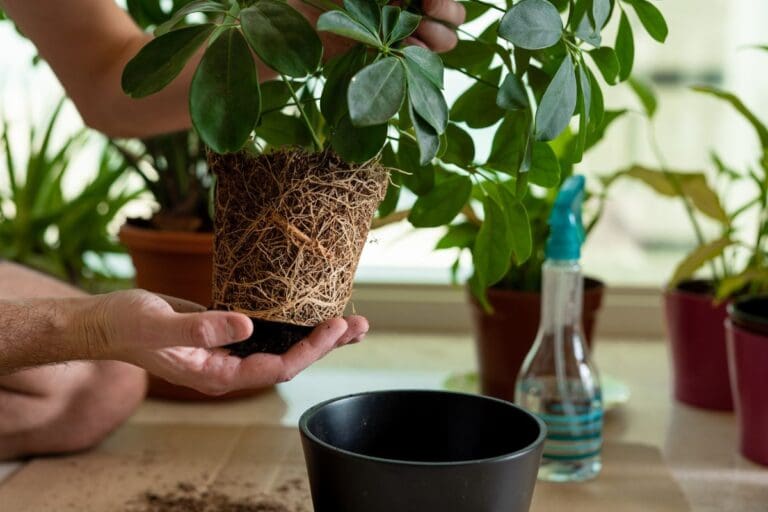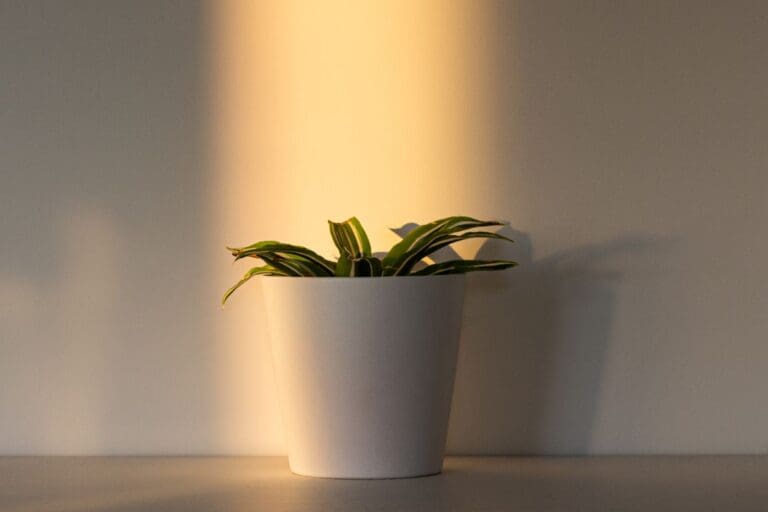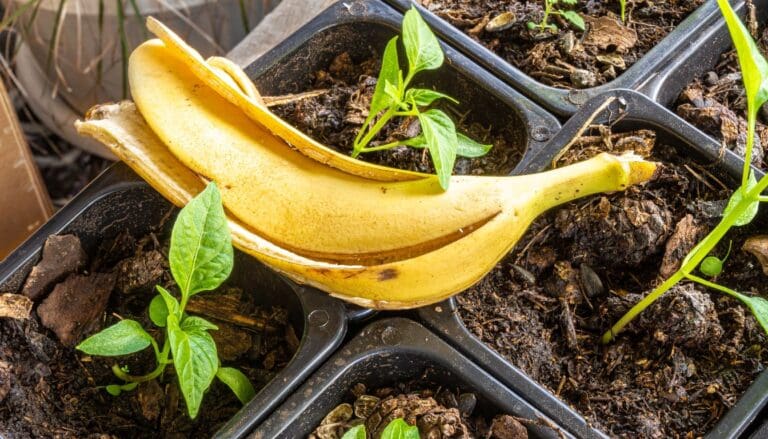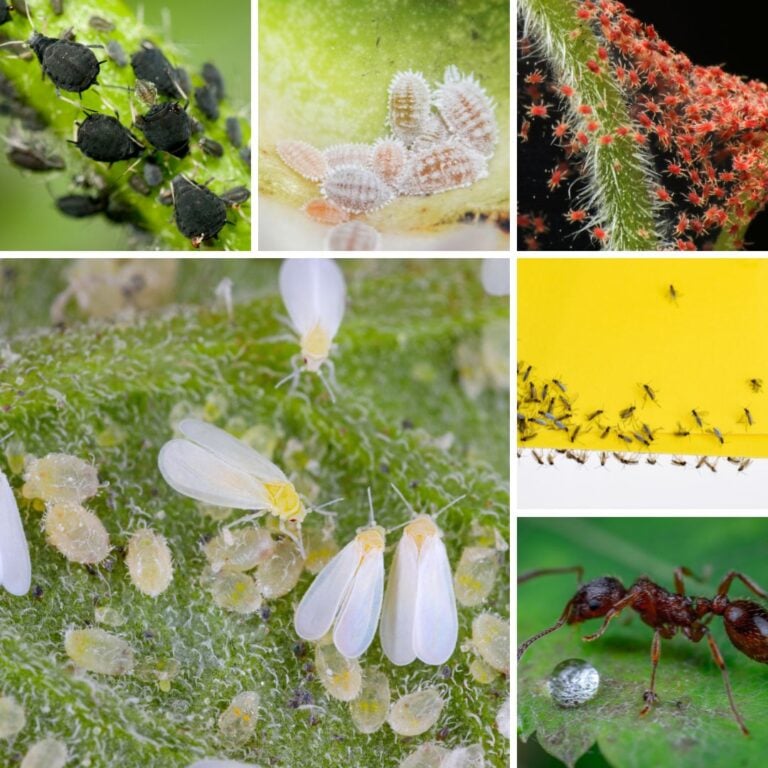Why Do Indoor Plants Get Moldy? (8 Effective Ways To Get Rid)
Most of us own houseplants, and we love them a lot. But the white, fuzzy mold in the soil breaks our hearts. It won’t cause much harm at the initial stages. But once it starts growing, it will affect the plant’s health. So it is better if we could get rid of it.
But why do indoor plants get moldy and how can we get rid of them?
Poor ventilation, inadequate sunlight, and poor drainage often lead to molds in indoor plant soil. Mold in houseplants can be treated by removing the infected soil and clipping the affected parts. Avoid overwatering your plants and keep them in bright lighting conditions to prevent mold.
Different types of mold are found in the plants. White mold is the most common one found in all indoor plants. Some others include black mold, gray mold, and sooty mold.
If you want to find out the reasons behind mold formation in your plants, this article will give all the information you would ever need. We will also cover information about their treatment and prevention.

Please note: Simplify Plants is reader-supported. Some links in the post are affiliate links and I get a commission from purchases made through links in the post.
Types of mold
Before you understand the reasons behind mold in indoor plants, you should know the different types of mold so that identification and treatment become easy.
Sooty mold
Sooty mold occurs due to high moisture in the potting soil. These are the most dangerous species that are either black or green.
They are identified as blotches of black spots and coatings on the leaves, stems, and flowers. These cause severe allergies and result in the disturbance of normal lung functions.
Blue mold
This blue species is very dangerous and is primarily found in trees. The spores can enter the woods and ultimately destroy the tree from inside.
White mold
White mold is the most common type of mold found in indoor plant soil. It may resemble salt accumulation, but there’s some difference in its structure.
Salt accumulation will have a crystalline structure. In contrast, mold has soft cotton or web-like structure that can be wiped easily.
However, it might not be much harmful to the plants but is very harmful to humans and animals. These can cause severe allergic reactions and infections called mucormycosis.
White mold is also called saprophytic mold. There are different types of saprophytic mold as well:
- Mucor: This mold is found in the soil, plants, and cow manure. It uses harvested grains during soil disruption for growth. It mainly grows over decomposed organic matter, particularly which have starch and sugar.
- Penicillium sp.: It grows when the humidity is very high, and the weather is damp. This mold spreads quickly through air and soil. However, studies say that when this mold comes in contact with the root system of the plants, it grows faster.
- Aspergillus sp.: These are found in the soil, seeds, and grains where it gets nourished as saprophytes. Though it is believed that this mold can be helpful for the soil, it is very harmful to humans, and if infected, it can cause respiratory diseases.
- Trichoderma sp.: TAhis is another common mold found in the soil and seeds or grains. This mold helps in preventing other fungus attacks and even boosts the plant’s growth.
- Yellow fungal mold: This is also one type of saprophytic fungus which is not harmful to indoor plants. You can easily remove them by discarding or repotting them with sterilized soil.
Gray mold
The fungus botrytis causes gray mold. This is mainly seen over the surface of the soil or on the leaves.
Your leaves and stems will have circular, gray, or brown spots. This mold is harmful to the plants and needs to be treated beforehand.
Powdery mildew
Another type of fungus that can look like mold infection is powdery mildew. But it is a fungus disease. The leaves have white patches on the surface, and it seems like powder is scattered all over the leaves.
These, too, are harmful to the plants and need treatment before they start spreading.
Causes of mold in the indoor plant soil

There are a lot of common problems in houseplants, like brown leaves, yellow leaves, curling leaves, and many more. And along with these, mold in the soil is also one common problem.
There are many reasons behind moldy soil. Although the mold is not harmful to a great extent, it can weaken your plant if not treated.
Now let us discuss the reasons behind moldy soil in houseplants.
Poor air circulation
High humidity and poor airflow can cause mold in the soil. Most of the time, this happens during the spring and autumn.
When the humidity in your room is relatively low compared to the amount the plants need, we try grouping them.
In such conditions, we forget about the ventilation. Without good airflow, the actinomycetes take advantage of the situation.
Excessive soil moisture
In trying to save the plant from underwatering, we end up watering it too frequently. We think that watering more frequently will help to keep the plant healthy. But instead, we cause more harm.
One of the main reasons for moldy soil is overwatering. Not only mold but excessive moisture would also make the plant susceptible to pest and fungus infestations.
When we water our plants, they take time to absorb moisture. But we make the mistake of watering again before the soil dries.
With repeated watering, excess water remains in the soil due to lack of drying and poor drainage. Thus, due to all these, the soil starts giving rise to mold on its surface. Slowly, all sorts of pests and fungus get attracted to the plant.
Not enough sunlight
Along with an overwatered situation, if the indoor plants lack sunlight, the situation will get worse. If the indoor plants are not getting enough sunlight, it will limit their nutrient absorption.
Insufficient sunlight will encourage the damp conditions, accompanied by cold and dark, to increase molds.
Organic fertilizers
Most indoor plant soil consists of peat moss. They are constantly feeding on the bacteria in the soil.
As this ingredient is still under decomposition process, it gives all the critical nutrients to the plants’ soil. So the mold formation is entirely normal.
Mold formation in the indoor plant soil can be just the next step for the natural decomposition process as the organic fertilizer gives nutrients to the soil, root system, and the plants.
Contaminated soil
Sometimes, we keep some potting soil in store for future use. But as the soil has micro-organisms in them, the soil may have gotten contaminated.
Experts recommend storing the leftover soil in a dry place along with the holes sealed very well.
Before using the soil, it is vital to check whether the soil is in good condition or not. It might happen that due to any puncture, moisture entered the soil and encouraged mold formation.
Decomposed leaves on the soil surface
Molds might get attracted by decomposed plant matters. When the spent leaves and flowers get gathered on the soil surface, mold will appear for feeding on them.
It is thus necessary to remove the spent leaves, stems, and flowers from the plant before they start dropping off. Or when they fell off the plant, remove them from the soil in the first place.
However, these fallen leaves can be utilized as mulch outdoors to decrease yard waste.
Will moldy soil harms indoor plants?
Moldy soil on indoor plants may or may not harm your plants, provided it is not increasing too much. It depends on the type of mold in your indoor plant.
Mostly, it is always the white mold found in the indoor plant soil. White mold is considered harmless than the other molds. The other types of mold can harm the plants, resulting in fungal diseases.
But as humans, dealing with mold is a bit risky. It is dangerous for humans, particularly for people having asthma or some allergies.
But, because mold is harmless, it doesn’t mean you should allow them to increase and not get rid of them. It is crucial to remove mold whenever it appears.
There are risks of having mold in the indoor plant soil for a prolonged period:
- The plant will become weak and tired. The mold will block the plants’ access to nutrients and water to the stems, leaves, and flowers.
- It will block air pockets, resulting in insufficient receiving of oxygen by the roots.
- Molds can invite various plant diseases.
- As molds appear due to excess moisture, the plant might be susceptible to root rot.
However, the older plants might not get much affected by the mold. But the younger plants have more risk of dying by mold if no action is taken beforehand.
How to get rid of mold?
It is vital to get rid of the mold from the indoor plants as soon as possible. There are different methods of removing it. Let us read some quick steps:
- If your houseplant soil has mold, remove the top part of the soil. This will prevent the infection from going deep towards the roots.
- Mix ½ teaspoon of lemon juice in a glass of water and pour over the lower part of the soil to moisten it. The acidic medium will prevent the mold from spreading and multiplying.
- Now, add new soil over the removed top part. Add fungal agents like sphagnum moss and charcoal pieces in the soil. This helps in filtering the components for moisture.
- Sterilize the soil by keeping it out under the sun.
- Mix 8ml of fungicide with 1lt of water and apply to the soil for treating the infection. This will help in fighting diseases. If the plant has also got infected, apply the same solution carefully for curing the plant.
- To ensure that the plant gets good results after these treatments, try occasionally aerating the top layer of the soil to help the liquids spread evenly without accumulating.
- If the soil is forming molds again, use the acidic medium in the soil two times a month.
These are the quick ways of treating moldy soil. Now let us get into the effective ways of getting rid of mold in detail.
Improve drainage
The first thing to do to get rid of mold is to improve the soil drainage. Remove the top few inches of the soil and replace it with new soil.
Materials like perlite, vermiculite, fine expanded clay, river sand have both the quality of retaining moisture and at the same time draining the excess water out of the soil.
While transplanting, you can add 30% of perlite or river sand to improve drainage. Sphagnum moss also can absorb excess moisture. You can add the moss on the surface of the soil to re-establish water and acid balance.
Repotting

Repotting is one of the easy and effective methods of getting rid of moldy soil. This will also help rejuvenate the growing conditions of the plants with fresh and new soil and nutrients.
For repotting:
- Take a new pot. The old pot might be infected due to mold and fungus. While choosing a new pot, choose 1-2 sizes larger than the existing one. Do not jump to a drastic large pot. Make sure that it has drainage holes.
- Make a perfect soil mix for the plant, which can be good in water drainage and moisture retention. Make it according to the type of plant you grow.
- Remove the plant gently from the old pot and soil. Gently remove the old soil from the roots of the plant without disturbing or harming them.
- Fill half of the new pot with new soil. Now place your plant in the middle, fill the surroundings with the same new potting mix, and press gently.
- Water the soil. Make it moist, not wet.
- Keep it under the bright indirect sun. Avoid fertilizing for at least six weeks.
After transplanting, observe the plant. After transplantation, every plant goes through a phase of shock.
The leaves will either become yellow or wilt or droop. Whenever you see such signs, fix the soil and its air pockets with bio-fungicides.
After some weeks, fertilize your plant. Though the new soil will have fertilizer for some time, immediate fertilizing might not be needed.
Loosen up the soil sometimes so that the bottom layers can get a good amount of oxygen and water does not gather in one place.
Use natural fungicides
Baking soda can help in removing mold from the houseplant soil. It is recommended to use with the other antifungal agents.
Add one tablespoon of soda and some detergent or liquid soap with 1 liter of warm water. The liquid soap will help in removing all sorts of stickiness due to molds. This will allow the solution to work on the affected areas.
Do not forget to clean the plant with wipes or cloth after application every couple of days.
If you find that the solution is working, continue using it until the problem is resolved. Applying this once every couple of weeks will prevent moldy soil.
You can use other natural fungicides like cinnamon powder, neem oil, or apple cider vinegar.
Spread some cinnamon powder over the soil to kill the mold. You can also add cinnamon to the top layer of the soil. Cinnamon consists of antifungal, larvicidal, and insecticidal properties, which will help treat mold.
Another excellent natural fungicide is neem oil solution that is used to treat all sorts of infestations.
You can mix 2 teaspoons of neem oil and 1 teaspoon of dish wash soap (a mild one) with half a gallon of water. Use the solution to water and flush your moldy soil thoroughly. Wait for the soil to dry up, after which you can repeat the process.
A mild solution of apple cider vinegar would also kill the mold. For the solution, mix 3 tablespoons of vinegar with one gallon of water. Spray on the plants and soil to dispose of the fungus spores.
Coal as a disinfectant
Coal not only can absorb moisture but also can disinfect elements. Sprinkle some coal over the soil to get rid of the mold. Grind them before applying. It will kill the spores and will benefit the soil conditions.
Coal will not only treat the plant but also prevent mold from appearing further. Remember to change the layer of coal after every few days. If you are using activated charcoal, never use it as a whole.
Wipe them off
Wiping the mold is one of the easiest ways to remove mold from the soil. However, you must be careful while removing them as, unlike plants, mold is toxic to humans.
Just wet a napkin and use it to collect the mold particles from the soil. It is better if you wear a mask and gloves while dealing them with your hands.
Chemical treatment
You can use chemical agents to remove the mold from the soil. You can get them from the market stores. Before you buy them, keep certain things in mind:
- The type of soil.
- The frequency of watering the plant.
- The features of the plant you own.
- The amount of mold formed, the type of mold, and its features.
- The amount, frequency, or timing of fertilizer you used and which one.
Keep the plants in sunlight.
Whenever you find mold forming in the soil, keep the plant under sunlight. Sunlight will help remove all the mold from your indoor plant soil.
As mainly mold is formed due to dark and damp conditions, giving them a good amount of sunlight will decrease the mold and warm the soil up.
However, this can be harmful to some plants which enjoy the indirect sun. So, try giving them bright indirect sunlight.
Use organic fertilizer with the proper ratio.
It can happen in some places that there is a high concentration of fertilizer. That is the place where molds can appear and grow.
The ideal ratio might vary, but a quick recommendation would generally be 1 part fertilizer to 10 parts of soil. This ratio will help in spreading the fertilizer in all parts of the soil.
How to prevent mold in the indoor plant soil?

Although mold is not much harmful and can be treated, still it is better to prevent mold formation in the indoor plant soil:
- Adjust the watering schedule. Water only when the top parts of the soil is dry. Keep checking the moisture level constantly by using fingers. You can water once a week very well and avoid watering the rest of the days.
- Make sure that the soil mix you are using has a sound drainage system and moisture retention properties. Always use sterile soil.
- Use a pot with drainage holes. If you are using decorative pots without any holes, create holes by drilling. Do not use any oversized or undersized pots.
- Ensure that your plants are receiving a good amount of sunlight. Whether your plant needs direct or indirect depends on the plant type. Research about the plants and never keep them in total darkness.
- Make sure that your plant is receiving a good amount of airflow. Good ventilation will prevent any mold formation.
- Whenever you find spent leaves, stems, or flowers in your plant, remove them by pinching them. Or, whenever you see them falling on the soil surface, remove them immediately.
- Avoid using open bags of old stored soil. If you want to use old soil, seal it very well and avoid entering moisture.
- Keep your plants clean.
- Try sprinkling cinnamon powder or baking soda every couple of weeks. This might help prevent molds.
Final words
Even though mold is not much harmful, but it is better to get rid of them. Excessive mold growth can cause a lot of problems in your plant in the future.
Try the preventive measures. That will help you in protecting your plant from mold formation. As there are different types of mold, some are harmless, and some are harmful, deal with them according to the type.
Indoor plants’ characteristics depend on their type. Before you take any preventive measures or treatments, try to research and know everything about your plant very well so that you can give them their best need and care.
Recommended Garden Supplies
| Product Image | Our Recommended Gardening Supplies | Check Offers! |
|---|---|---|
Top Top
Top
Top
Top
Top
Top
Top
Top | rePotme Houseplant and Tropical Classic Potting Soil Mix | Check Offer On Amazon |
 Top
Top
Top
Top
Top
Top
Top
Top | Espoma Organic Indoor Plant Food | Check Offer On Amazon |
 Top
Top
Top
Top
Top
Top
Top
Top | GooingTop LED Grow Light 6000K Full Spectrum Clip Plant Growing Lamp | Check Offer On Amazon |
 Top
Top
Top
Top
Top
Top
Top
Top | Soil Moisture Meter | Check Offer On Amazon |
 Top
Top
Top
Top
Top
Top
Top
Top | Govee Hygrometer Thermometer, Bluetooth Enabled! | Check Offer On Amazon |
 Top
Top | LEVOIT Humidifiers for Large Room(Best For Plants) | Check Offer On Amazon |
 Top
Top
Top
Top
Top
Top
Top
Top | Upgraded DIY Automatic Drip Irrigation Kit, 15 Potted Houseplants Support | Check Offer On Amazon |
 Top
Top
Top
Top
Top
Top
Top
Top | Stainless Steel Heavy Duty Gardening Tool Set | Check Offer On Amazon |
 Top
Top
Top
Top
Top
Top
Top
Top | Bonide Insecticidal Soap | Check Offer On Amazon |
 Top
Top
Top
Top
Top
Top
Top
Top | Bonide 32 oz Spray Neem Oil for Organic Gardening | Check Offer On Amazon |
 Top
Top
Top
Top
Top
Top
Top
Top | Garden Safe Fungicide | Check Offer On Amazon |






